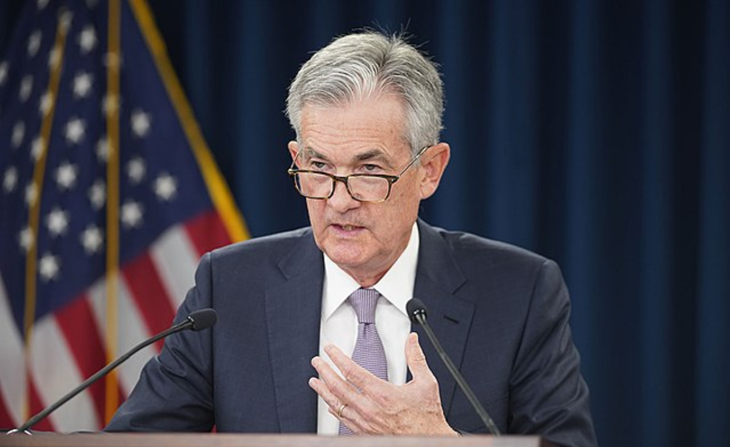 @Wikimedia.
@Wikimedia.
Jerome Powell, Chairman of the US Federal Reserve, has said it is likely that the Fed will need to further increase interest rates to control inflation.
Powell’s comments come right as many in the industry had expected the surge in interest rate rises to ease off – or fall altogether – as many believed the ‘peak’ of the post-COVID inflation rises had already come and gone.
These sentiments persisted despite the annual inflation rate for the US sitting at 6.4% for the past 12 months ending in January 2023 – after rising 6.5% previously, according to US Labor Department data published on 14 February.
“The data from January have partly reversed the softening trends
that we had seen in the data just a month ago.”
Many insurers noted that inflation was their number one financial concern for 2023.
Speaking on 7 March at the Semiannual Monetary Policy Report to the Congress before the Committee on Banking, Housing, and Urban Affairs, Powell said the Fed had taken forceful actions to tighten the stance of monetary policy.
“The data from January on employment, consumer spending, manufacturing production, and inflation have partly reversed the softening trends that we had seen in the data just a month ago,” said Powell. “The breadth of the reversal along with revisions to the previous quarter suggests that inflationary pressures are running higher than expected at the time of our previous Federal Open Market Committee (FOMC) meeting.”
On the back of Powell’s comments, the Dow Jones closed 570 points lower after a sharp selloff – and turned negative for 2023.
At close on Tuesday (March 7), The Dow Jones Industrial Average shed 574.98 points, or 1.72%, to end at 32,856.46. The S&P 500 lost 1.53% to close at 3,986.37 and below the 4,000 level. The Nasdaq Composite dropped 1.25%.
In his comments, Powell added that from a broader perspective, “inflation has moderated somewhat since the middle of last year but remains well above the FOMC's longer-run objective of 2%.”
He also said that the 12-month change in total personal consumption expenditures (PCE) prices has slowed from its peak of 7% in June to 5.4% in January as energy prices have declined and supply chain bottlenecks have eased.
"The bottom line for us is that we are finding many businesses selling
significantly below our estimate of their intrinsic value.”
Market commenters were less pleased with Powell’s comments and the effect they would have on the market.
“As long-term patient investors we do our best to filter out the economic ‘noise.’ The bottom line for us is that we are finding many businesses selling significantly below our estimate of their intrinsic value,” said Jonathan Boyar, Managing Director at Boyar Asset Management in New York, and Principal Advisor to the MAPFRE AM US Forgotten Value Fund on Powell’s remarks.
“Investors would be better off not trying to figure out what Chairman Powell will be doing next and better off spending time figuring out what the businesses they own are worth and what are the catalysts for capital appreciation.”
Investment teams at US insurance companies had specifically said they saw interest rates likely remaining volatile throughout 2023.
“We’re very mindful that we need to manage portfolios in a way that doesn’t meaningfully depend on bets on interest rate movements,” said Louis DiFranco, Head of Insurance Solutions, PGIM Fixed Income, in the recent Insurance Investor “Insurance Asset Management North America 2023” report.
“The US Federal Reserve will likely raise rates for another two or three meetings, but there is light at the end of the tunnel,” said DiFranco.
In the same report, Thomas Holzheu, Chief Economist, Americas at Swiss Re, added that his company saw “the return to real interest rates as one of the paradigm shifts in our outlook”.
“If you look at the interest rate forecasts and inflation expectations, we have moved to positive real yields in a very short period. I don’t expect a return to negative rates any time soon. It is a possibility as a tail risk but not a likely outcome,” he said.
“Higher interest rates and slower output growth also appear
to be weighing on business fixed investment."
Powell’s recent testimony also revealed that the US economy had slowed significantly last year, with real gross domestic product rising at a below-trend pace of 0.9%. “Although consumer spending appears to be expanding at a solid pace this quarter, other recent indicators point to subdued growth of spending and production,” he said.
“Higher interest rates and slower output growth also appear to be weighing on business fixed investment." He reiterated that the labour market remained tight, and unemployment was low.
Powell’s comments on the economic situation were backed up by other central banks even with potential falls in inflation this week: A policymaker at the Bank of England said the UK’s interest rates should be held at 4% even amid signs of cooling inflation, rather than adding to pressure on the economy with a further rise in borrowing costs.
Swati Dhingra, an external member of the Bank’s rate-setting monetary policy committee (MPC), said higher borrowing costs would pose a “material risk” to the UK economy during a speech in London this week.
The US insurance industry had largely seen bullish results in 2022, with many posting year surpluses and stronger Q4 revenues – after a lacklustre Q3 – but with unremarkable investment portfolio returns.
Last year, Carlos Wong-Dupuy, Senior Director at AM Best, told Insurance Investor that the current era of higher interest rates and the increasing concerns related to climate trends and geopolitical risks added to the need for well-established players to restore profitability. This, he said, was needed to compensate for a long period of technical underperformance.
Insurers saw high cat losses and a turbulent macroeconomic environment in 2022, so continuing market instability could be a further headache further in 2023.